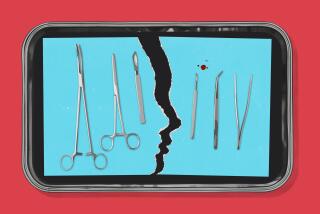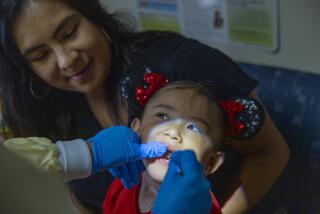Dental Office Roles Undergoing Change
- Share via
Sitting in the dental chair awaiting a deep teeth cleaning, the patient was prepared for a long and possibly uncomfortable procedure. She was not prepared for an injection from the dental hygienist.
To the surprise of this patient and others, the role of dental hygienists has changed. They now perform many of the functions--including administering local anesthetics--once performed only by dentists.
Since 1974, California has licensed dental hygienists and dental assistants, said a spokeswoman for the state Board of Dental Examiners. And, for years, hygienists have been allowed to administer injections and nitrous oxide (“laughing gas”) and perform the deep cleaning needed by patients with gum (periodontal) disease.
Yet many patients are unaware of the scope of responsibilities for both dental hygienists and dental assistants, say those who work in the field.
There’s confusion, too, about the differences between “dental hygienists” and “dental assistants,” added Glenda Flora, a dental hygienist and president of the California Dental Hygienists Assn. Their training is different and so are their tasks, said Flora, who suggests patients find out who’s who before starting treatment.
Dental assistants, for example, are prohibited by law from performing teeth cleanings, Flora said. Assistants can help by handing instruments to the dentist, taking impressions of teeth and performing other tasks.
Even among dental assistants, educational backgrounds vary. “Some go to dental assistant schools for six months or longer,” Flora said. Some receive only on-the-job training. “And dental assistants do not have to be licensed by the state, although some are.”
If dental assistants choose to be licensed, they can apply to become a registered dental assistant or a registered dental assistant “in extended functions,” a newer category, said the spokeswoman for the state Board of Dental Examiners. The extended-function license allows the assistants to perform seven additional techniques, such as assisting with crown work, taking impressions and applying tooth sealants.
All dental hygienists must be licensed and are required to complete a two-year approved dental hygiene program and pass written and clinical tests to receive a California license. They can perform all tasks of a dental assistant. In addition, they can perform dental cleaning and, under the direct supervision of a dentist, give injections and nitrous oxide and perform deeper periodontal cleaning.
More to Read
Sign up for Essential California
The most important California stories and recommendations in your inbox every morning.
You may occasionally receive promotional content from the Los Angeles Times.













